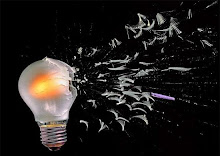
For the last couple of years DSLRs are commanding increased manufacturer interest. Margins here are much better than in the compact and prosumer segments, and products cycles are of the order of 1.5 to 2 years instead of the few months of their smaller brothers. The increase of competition has brought prices down and attracted an increasing number of amateur photographers.
DSLRs have always been seen by photography professionals and enthousiasts as the tools that differentiate men from boys. The first step of closing the gap was the death of film and the darkroom, the later being a major obstacle for many amateurs. Well, like it or not, hardcore or not, in a second step DSLRs now start to have features that we previously expected only from compacts and prosumer models. Let’s see the main ones:
Live view, in other words picture taking with the use of the camera’s screen instead of looking directly through the lens via a mirror.
Foldout screens that do not just sit at the back of the camera but can be aligned as we like and combined with live view allow us to take pictures from difficult angles and positions. If you have ever tried to take frames very near the ground you know how uncomfortable and dirty it can get. Check out the attached photo of a Sony model that will probably hit stores soon.
In-body stabilisation that helps usually by two to three stops and makes all lens much more useful.
Dust protection for the sensor.
Things like programs for different conditions -sports, indoors, etc- are direct descendants of compacts and admittedly are a nuisance for serious photography. On the other end, dust protection has first been used by Olympus and is a nice feature that tries to mimic the sensor cleanliness enjoyed by compact camera users.
Others, like foldout screens, were earlier in the decade those little ”extras” that differentiated prosumer models from the smaller compacts or the larger DSLRs. Now that cheap DSLRs offer the same goodies combined with better results, the prosumer segment seems to be destined for extinction. Brands like Canon and Nikon with strong legacy are reluctant to integrate features like in-body stabilisation, I expect this however to change as competition has made some of those standard.
So are DSLRs destined to function as compacts? I doubt it, even for the very cheap models. The adopted features are designed to match well with camera character. Fanatical photographers would be very critical of meddling with the character of their favorite brand and would never let it happen.
As has been proven by CES 2008, we are currently at the point where new camera models and especially DSLRs can hardly surprise us and generally follow slower evolution patterns. As however the megapixel race is effectively over and models become ever more similar in operation and performance, new paths will be sought. And yet again, the killer new feature is going to be something enjoyed by compact models for years. Do not laugh, it is video and it will become a huge threat to DSLRs if they do not accommodate it in some way or another. In fact there is a new school of thought that believes that obtaining pictures from video frames will become a standard reporting tool and there are already seminars to prove it…
Link :
Electronrun Remember the Matrix movie and the way humans became grown heat-producing plants to provide for their machine lords? The word “harvesting” gives me the crawls, but luckily harvesting in this world is for our own benefit and energy dependence. Interesting ideas so far are the energy harvesting from gym users or vibrations from trains and human steps. Kinetic energy is everywhere, it is just a matter of how to harness the damn thing and convert it to useful energy.
Remember the Matrix movie and the way humans became grown heat-producing plants to provide for their machine lords? The word “harvesting” gives me the crawls, but luckily harvesting in this world is for our own benefit and energy dependence. Interesting ideas so far are the energy harvesting from gym users or vibrations from trains and human steps. Kinetic energy is everywhere, it is just a matter of how to harness the damn thing and convert it to useful energy.  However there are some nice opportunities where kinetic energy presents itself in more organised ways and can be collected more easily. Case in point is Fluxxlab’s revolving door harvester. It can be an all new installation or a conversion to an existing door. Unsuspecting humans rotate the spindle, that then rotates a magnetic wheel, that in turn creates current flow in stationary wire coils. Simple and effective.
However there are some nice opportunities where kinetic energy presents itself in more organised ways and can be collected more easily. Case in point is Fluxxlab’s revolving door harvester. It can be an all new installation or a conversion to an existing door. Unsuspecting humans rotate the spindle, that then rotates a magnetic wheel, that in turn creates current flow in stationary wire coils. Simple and effective.




